
Fine Art, Computing
COCO for K.H. took 6 months to complete, and is the culmination of my studies in computing and the arts. Motivated by a desire to understand my turtle and make life more fun for her, I conceptualized multiple projects, eventually arriving at a "fashion collaboration." To achieve my vision, I learned about turtle cognition, explored sensor technology and basic computer vision, and went through countless rounds of testing with 3D printing.
Along the way, I was inspired by a number of scientists and artists, including the prominent herpetologist Rosemary Lombard, who makes art with her turtles, Russian artists Komar and Melamid, who taught elephants to paint, and Camille Cortet, who creates transformational garments based on animal biology and behavior.
"How does art help us understand the interests and mental abilities of animals?"
—Dr. Rosemary Lombard
A large flat-screen TV was attached to one side of an aquarium, while an XBox Kinect sensor hung directly overhead. Whenever the turtle touched the glass in front of the TV, the Kinect sensor detected the XZ position of the turtle, and Processing (a sketchbook software based on Java) translated this data to an XY position—mapping this point onto the TV screen. The result is an underwater, pseudo-touchscreen drawing pad.
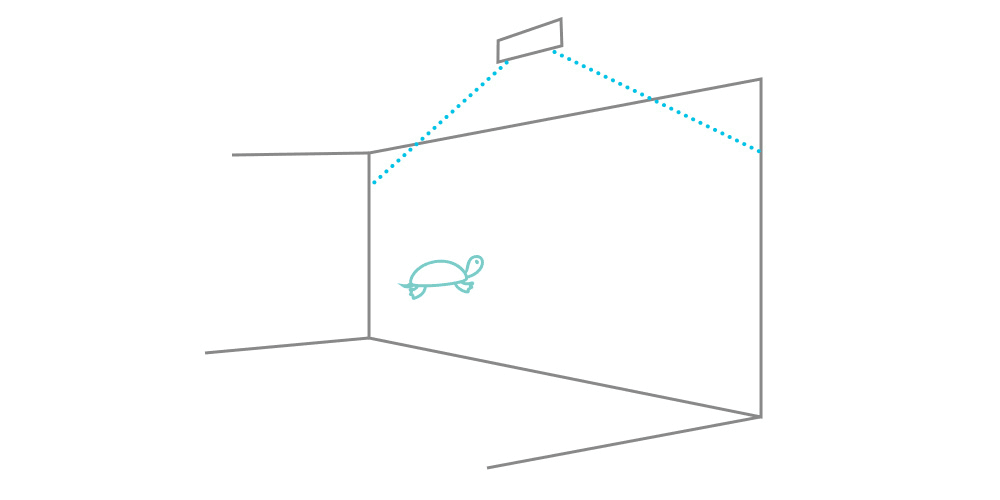
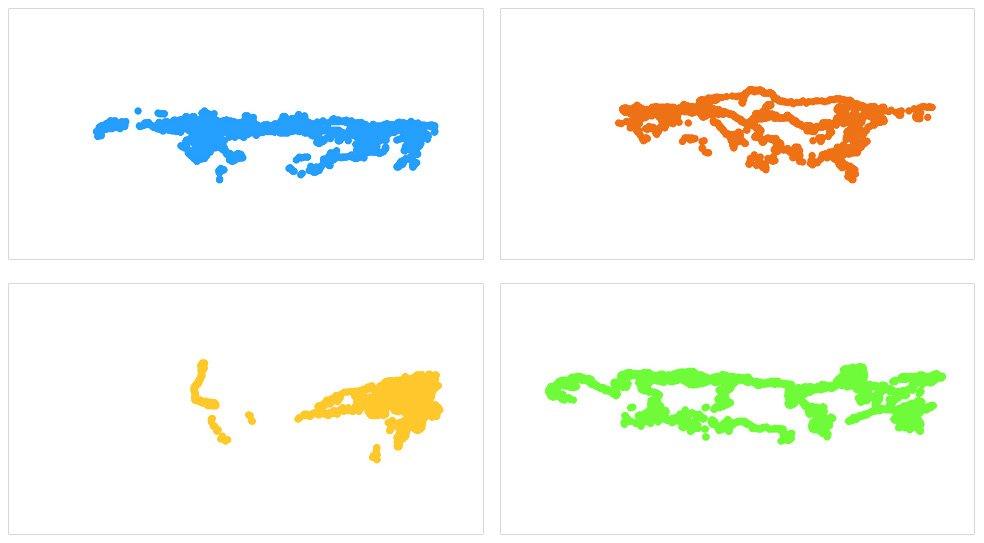
A selection of drawings created by the turtle.
I used her drawings as patterns for 3D-printed synthetic fabric and sewed these pieces into a turtle-inspired cape coat. The cape coat was designed to resemble a red-eared slider and to mimic the function of a turtle shell, offering protection and shelter.
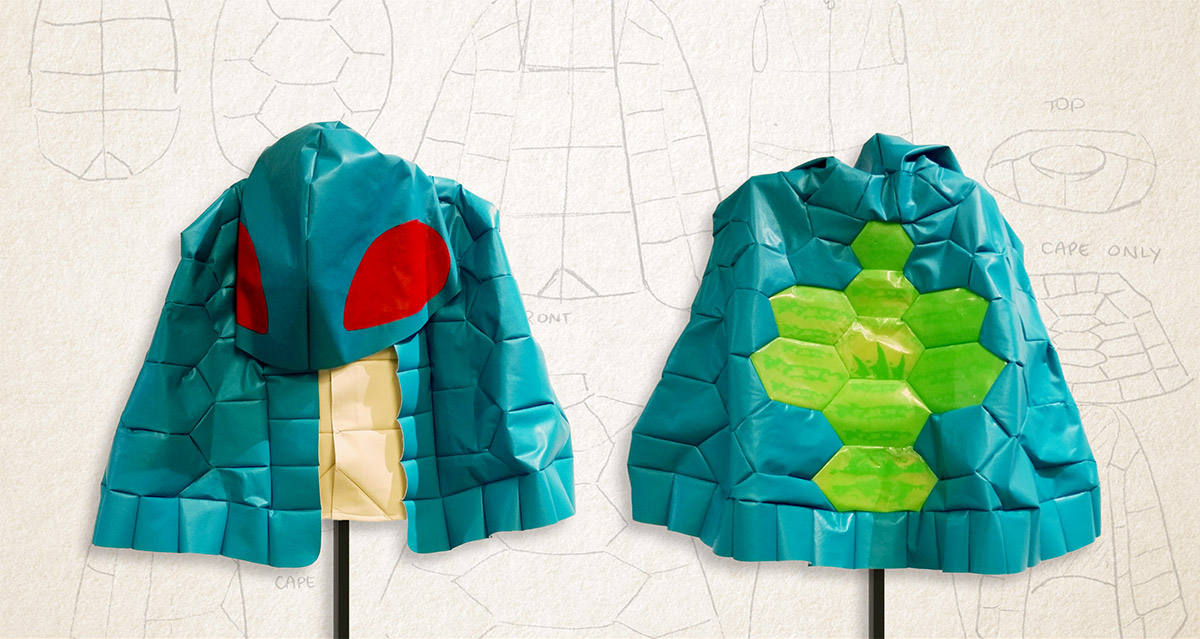
I framed the project within the context of an interspecies fashion collaboration, and created a promotional video for a fashion collection called “COCO for K.H.” The video explains some of the artistic concepts and shows how the coat was constructed.
COCO for K.H. was displayed at the 2016 Best of ICAM exhibition in the UC San Diego Adam D. Kamil Gallery. During the reception, I spoke about the art piece and modeled the coat for an audience.
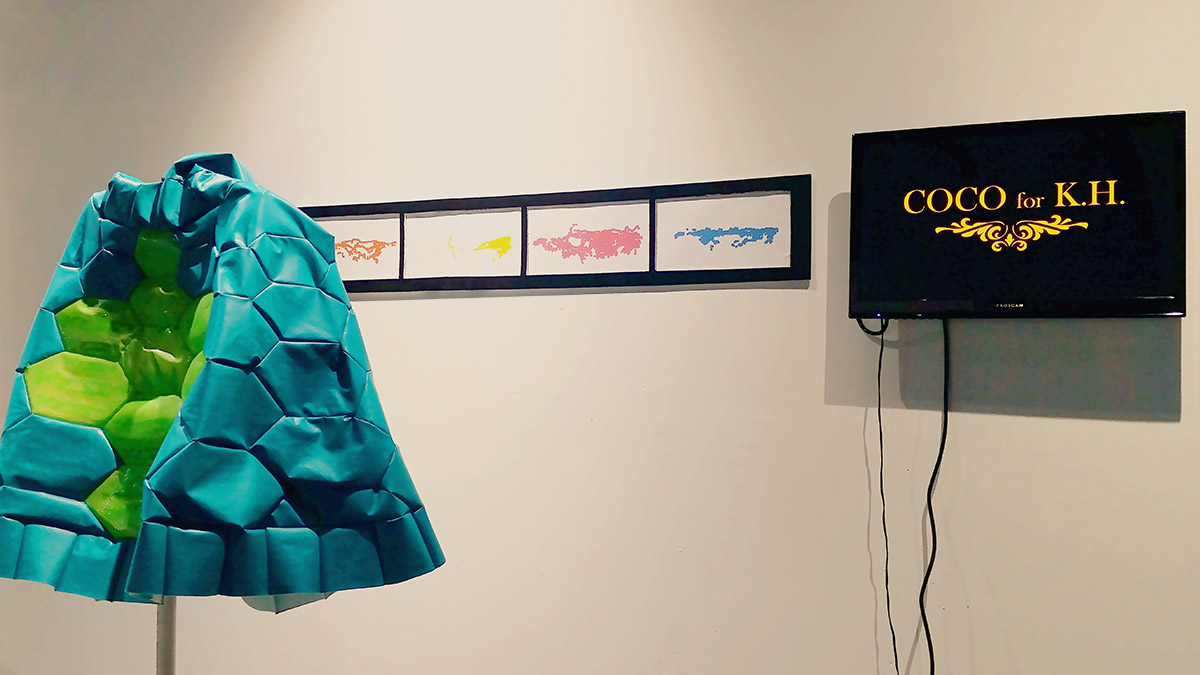
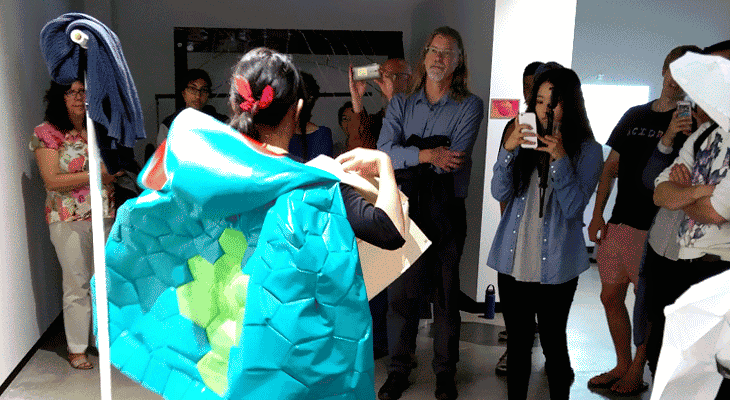
Overall, the project truly tested my ability to persevere and continually innovate. Every week it seemed like there was a new problem I needed to conquer. When the sensor I was originally planning to use proved too costly and time-consuming to obtain, I needed to find a different technology that would work just as well. When I realized that the Kinect sensor could not accurately gather the XY data I needed, I changed the position of the sensor and reconfigured my program to obtain accurate XY data from XZ data. When I discovered that the 3D printer could not print fast enough to produce enough parts for the original garment design, I redesigned to coat to incorporate fewer printed pieces while still looking nice and cohesive.
The process was exhausting, but also immensely rewarding. At the start, I balked at the idea of having to build an underwater drawing pad. But when the project was completed, I almost couldn't believe how much I actually accomplished.